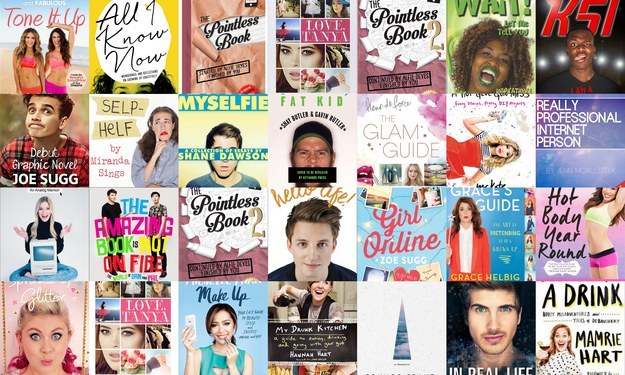Simply uttering email may have a lot of marketers roll their eyes. They will immediately dismiss your enthusiasm and embrace for email by arguing the notion that email is dead in 2016.
Of course, you know better because email isn’t dead. Instead, in 2016, it has gone through a renaissance by being resuscitated and redesigned by digital marketers and brands everywhere. The results are impeccable, the popularity is growing and the strategies are evolving.
If you were in the “email is dead” camp then you may be wondering just how it has been revived. Well, there are plenty of answers and examples to your curiosity. Social sharing is just one of the ways that email has been provided with a 21st century makeover. In fact, email marketing now goes hand in hand with social media and social sharing. The marriage has been a merry one.
Many digital marketers will tell you that social sharing has completely enhanced email today.
Here are just a few statistics to take a look at:
- Emails with share buttons have a 158% higher click-through-rate.
- Half of customers find a customer through Facebook.
- The average email click-through rate for messages shared on LinkedIn is 7.9 percent.
Emails with social sharing buttons – Twitter, Facebook, Pinterest or LinkedIn – can achieve a lot of goals: spread your content around the Internet, amplify your brand’s reach and get Likes.
You now may perhaps be wondering just how exactly you can complement your email marketing campaign with social sharing strategies.
Here are five ways to make social sharing complement your email marketing campaign:
- Study Trending Topics
- Make Your Sharing Easy
- Visualise Your Emails, Man!
- Retweet This, Hashtags & Proofing
- What Social Network Suits Your Needs?
Study Trending Topics
When it comes to email copy, you want content that is persuasive, creative, personal and enticing. But the content’s primary topic is something that can be hard to come up with.
Remember, you want it to be relevant, timely and shareable.
An easy remedy to this common problem is to peruse the trending topics on Facebook or Twitter. If you’re writing content that is trending across social media then it’s more likely your emails will be shared throughout the social landscape. This will instantly raise your social media profile.
Once you find an industry-related trending topic then be sure to follow these suggestions:
- Avoid controversial issues because you don’t want to draw negative attention.
- Never interject yourself into unrelated conversations, topics or issues.
- Do not duplicate existing content that has been shared online.
- Refrain from producing either clickbait or sharebait email content.
Remember, social media trending topics are always changing and updating. This week, it may be trending on Twitter, but next week it have disappeared. You have to immediately adapt.
Make Your Sharing Easy
Let’s face it: despite how the Internet has made our lives easier, we’re a very lazy generation.
Therefore, if you want your email content to be shared, you have to make it easy to share in the first place. This is achieved by inserting social share buttons directly into the emails themselves.
When you add Facebook, Twitter, Pinterest or LinkedIn social buttons to your emails then you can substantially raise the reach and effectiveness of your emails. If you compose compelling content then the readers will want to share your content and spread the message you are conveying with a simple click of a button.
Here are a few tips to think about when you’re adding social buttons to your emails:
- Ensure that the social buttons are easy to see in the email.
- Urge the reader to share the content on social media.
- Ask that the readers follow your brand on the various social networks.
- Remember to thank users who share your email content on social media.
By making social buttons an important feature of your emails, you make your brand cool.
Visualise Your Emails, Man!
Social media has morphed into a very visual environment. Whether it’s video advertisements on Facebook or GIFs on Twitter, users are really embracing the visual movement taking over.
What does this mean for you? It’s simple: you have to visualise your email content, man!
You have plenty of visual options for your socially integrated email content. You can take advantage of memes, GIFs, short video clips, graphics, stock photos and the list goes on. As long as they are relevant to the emails, your brand and the content itself then there is nothing wrong with ensuring you have at least one part of your email campaign with a visual.
It’s important that you do not go overboard. This isn’t the 1990s when email recipients were spammed with images, several exclamation points, colorful text and overdone eye candy.
Retweet This, Hashtags & Proofing
Everyone knows how crucial it is to have Twitter as an integral part of your digital marketing campaign. Without Twitter then you will not get your 140-character message across.
In addition to social buttons, your email marketing can maximise Twitter through the Retweet This snippet, hashtags and social proofing. These three social features will definitely ensure that you have properly integrated social media into your email marketing strategy.
Here is how you can utilise these three social media tools in your emails:
- Retweet This: if you have a crucial statistic, a well-written sentence or a special offer and you want the readers to share it online then you should add the Retweet This snippet next to the sentence. It takes just two clicks for the user to share it on Twitter.
- Hashtags: when you want to start a conversation or take part in a conversation then hashtags are your friend. By using a hashtag, you can follow along what people are saying, which can be important for your brand, especially if you initiated the hashtag.
- Proofing: social proofing has become integral to any digital marketing campaign. With 63 per cent of consumers saying they’re more likely to buy a product with social reviews, social proofing is a big deal for brands. You can add tweets about your brand in your emails, you can mention how many followers you have on Twitter and you can share customer stories through a series of tweets.
Social proofing is a modern form of persuasion. And, once again, it can depend on your audience. Consumers are more likely to be persuaded by similar people, which is described as implicit egotism. Social proof your emails and witness your numbers soar.
What Social Network Suits Your Needs?
You will want to prioritise your social network outreach depending on your brand’s needs.
For instance, LinkedIn is a social network comprised of industry professionals, while Instagram is more for young, tech-savvy consumers. Pinterest maintains a vast network of young females, while Google+ is also a hub for tech-savvy users. Every social media outlet is different.
Which network is more likely to suit your brand’s audience? This is something that you have to determine in order to maximize your social network outreach campaigns and strategies.
If you’re a B2B firm then Pinterest likely won’t match the demographic you’re trying to capture.
Final thoughts
Email may have slowed down in the early-2000s, and it still may not garner headlines. However, email marketing has become the most effective way to communicate a message. And when you integrate it with social media then there is certainly no way of slowing it down whatsoever.
No one will argue the fact that social media has become integral to mass marketing, both online and offline, for businesses of all sizes. Without it, many brands could not survive and thrive.
When you make your email become more sociable and shareable then you increase your brand’s awareness and reach. With more than a billion people using Facebook, hundreds of millions using Twitter and millions using Pinterest, social proofing can maximise the efficacy of email.
Your email content may be Shakespearean, but if no one is reading it then what use is it? Let Facebook, Twitter, LinkedIn, Google+ and Instagram spread your message and do all the work.






